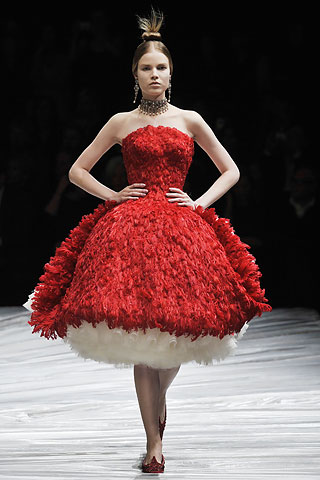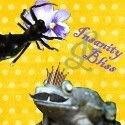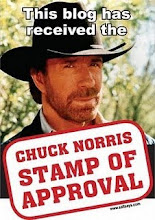At the age of 14, Waneek Horn-Miller (Mohawk) fell into the Canadian spotlight in the midst of what came to be known as the Oka crisis. Kahnawake, Quebec is home to the Mohawk but in 1990 the land became a site of serious tension between the Canadian government that wanted to utilize it for white Canadian settlers, and the Mohawk that wanted to retain their land for their own use. Horn-Miller went to the front of the tension lines to deliver resources to the Mohawk that stood facing the Canadian military. Soon after her arrival, tensions erupted into violence. Picking up her four year old sister to try and get her away from the area to safety Waneek ran only to be stabbed by a Canadian soldier's bayonnet. The bayonnet entered Waneek's chest less than an inch from puncturing her heart.
Soon after the Oka crisis Horn-Miller dove deeply into sports. She excelled in water sports and soon became a co-captain of the Canadian Water Polo team, taking them all the way to the 2000 Olympics in Sydney. She was one of the few water polo players that year to successfully goal as well. When interviewed about her participation in the Olympics, and her success in reaching such an accomplishment, she stated that she was deeply motivated by wanting to be one of the ones that succeeded, and to show other Natives that they too could surpass expectations and succeed at such a high level.
To read more about Waneek Horn-Miller read the following article on Native athletes
or watch the movie CLUB NATIVE
Soon after the Oka crisis Horn-Miller dove deeply into sports. She excelled in water sports and soon became a co-captain of the Canadian Water Polo team, taking them all the way to the 2000 Olympics in Sydney. She was one of the few water polo players that year to successfully goal as well. When interviewed about her participation in the Olympics, and her success in reaching such an accomplishment, she stated that she was deeply motivated by wanting to be one of the ones that succeeded, and to show other Natives that they too could surpass expectations and succeed at such a high level.
To read more about Waneek Horn-Miller read the following article on Native athletes
or watch the movie CLUB NATIVE














She is awesome, but what the FUCK is it with having to sexualize female athletes in the media? Grr, argh, pisses me off.
ReplyDeleteElla, thank you for your comment! Yes, I understand the kind of frustration you point to here.
ReplyDeleteIn fact, you've motivated me to think on writing up a blog post on that kind of thing eventually.
In the meantime though I thought I'd give a little more context to the photo of Waneek (which in no way answers your question nor excuses the concern shown in it).
The TIME photo was one of a series of images taken of several Canadian athletes going to the Olympics that year. The images were of both male and female athletes and all were shown nude with a prop of some sort from their particular sport. In this sense, it was not only Waneek, nor only females athletes that were shown naked.
Further, Waneek is a female athlete, as you point out. But she is also Mohawk. The truth is that her appearing in the way she does above as a STRONG Mohawk woman at the pinnacle of success in her sport is historically significant. The history of First Nations/Natives in North America is such that Natives, and particularly Native women, are usually not shown at all (rarely shown), or, if they are shown then it is either in a way that is either fetishized, or demoralized.
Further, there is a sense in which the bodies of women of color are treated in the media as though those bodies are not to be celebrated. There is OF COURSE problematic treatment of women's bodies in the media in general. The kind of objectification that often occurs here (which I take it is part of the frustration you point to in your comment) makes attractive women's bodies not belong to the women themselves in a sense. In this way, women are treated as though their bodies are valuable but not for their own sake and not for the individual woman's sake, and yet at the same time, paradoxically, as though this is the kind of value the women themselves should covet.
Women of color, on the other hand, should not even expect to be held up in this kind of problematic way, and if they are treated as desirable are treated so in an imperialistic fetishized sort of way that is deeply disturbing.
I am not claiming at all that the image of Waneek escapes these kinds of social tensions or problematic symbolic meanings. However, at the same time, I chose it because celebrating a woman of color, and even more specifically A NATIVE WOMAN, in this kind of way that is presenting her both as CLEARLY STRONG and CLEARLY SUCCESSFUL is of enormous importance. It should be treated as iconic in that WE WANT POSITIVE IMAGES LIKE THIS in the world. Women of color, and Native women needed to be regarded as strong AND successful AND beautiful because they are all these things and can be all these things. So, there are certainly problems within our society in these kinds of ways as you mention, and even so this TIME image is both deeply important and beautiful.
Now that I know that there was a series of male and female athletes pictured, and all were naked, I feel a bit better about it.
ReplyDeleteFor an interesting read on the subject, check out the Sociological Images blog post:
http://thesocietypages.org/socimages/2011/01/14/portraying-athletes-his-and-hers-sports-illustrated-covers/
And you're totally right, of course, with regards to this image being significant as a depiction of a strong Native woman.
And slightly unrelated: do you know if that tattoo on her chest is a scar coverup from the stab wound?
i know that she has a scar just above her heart, so yes, it is in the area of the scar. i believe though that she has not covered up the scar. she now has a much larger tattoo on that side of her body (over the shoulder and onto the back as well, and down the arm, if i recall correctly). i believe it is a kind of celebration tattoo, though i can't say anything more personal about her own reasons for it.
ReplyDeletethank you for the link to the article. i appreciate it and very much care about these kinds of issues.
on a slightly different note: if you have the chance to see CLUB NATIVE, it is incredibly moving, and the segments specifically on her are especially so. it's a deeply personal movie for me though, admittedly, and i can't help but watch it without bursting out crying multiple times. i showed it in a class to help get into a discussion on native identity/race issues and i had to schedule it so that a colleague showed it for me because i wasn't willing to burst out crying in such an obvious way in front of my students, and i wasn't willing to not show it either.
ReplyDelete